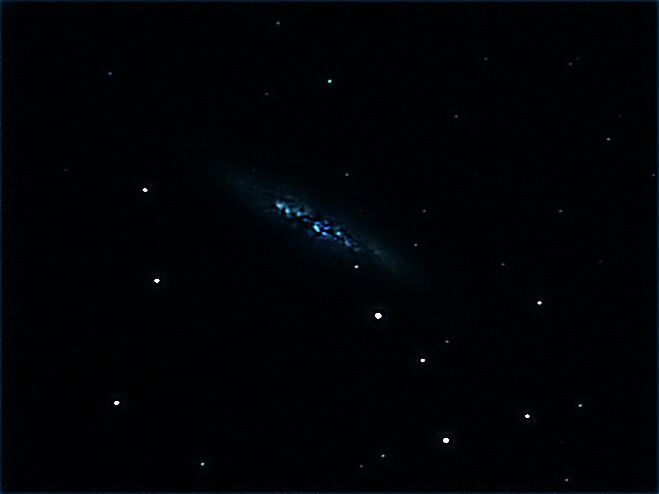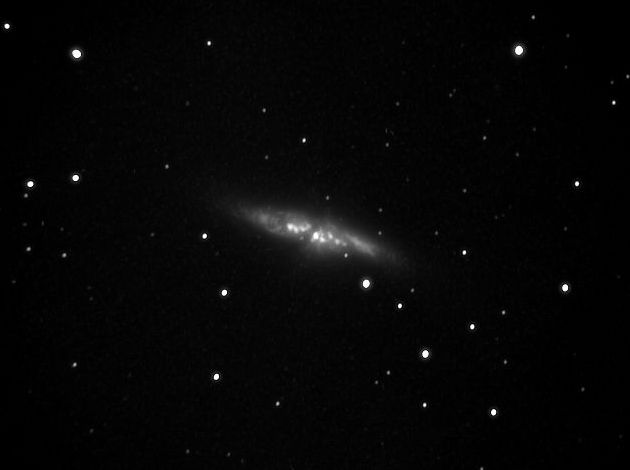

M82 is officially a disk-irregular galaxy and is also in a class known as starburst galaxies. It is a satellite of M81, a large spiral galaxy, and probably had a close encounter with it around 600 million years ago. This has resulted in disruption of any structure that M82 may have had previously, and has also triggered a burst of star formation. It is the brightest galaxy in the sky in infra-red light, and it is also a strong emitter of radio waves (probably caused by turbulent gas resulting from its close interaction with M81). It is 12 million light-years away in the constellation of Ursa Major.
M82 was first discovered, along with M81, by Johann Bode on the last day of 1774, and rediscovered by Pierre Méchain in August 1779. Charles Messier added them to his catalogue in February 1781.
 |
My first attempt at this galaxy. I didn't start imaging until after midnight and as each exposure had to be 2 minutes, I left the system imaging and went to bed. Sadly some cloud moved through later in the night, and my tracking was not perfect enough and M82 slowly drifted to the left. Combined with a few frames when the telescope seems to have shaken, this reduced the usable frames to 20. My impression was that I saw more colour in the preview screen than shows here. Considerable stretching of the histogram has been necessary to bring out the relatively faint galaxy and this seemed to enhance the blue and I have reduced the background to black using the colour-balancing features of RegiStax, but the galaxy remins rather blue; I don't know if it is real, but I doubt it. Date and Time: 31st March 2008 00:29 to 01:24 UT Camera: Atik 16ic colour Telescope: LX200 with 0.33 focal reducer (focal length 800 mm) Capture: Artemis Capture. 28 of 145 frames, 120" exposure Processing: RegiStax. 19 frames stacked, wavelets 1-2=10, histogram 3-68. |
||
 |
My second attempt at this galaxy this time with my monochrome MX716 camera. Date and Time: 7th October 2011 20:40 to 20:49 UT Camera: Starlight Xpress MX716 Telescope: LX200 with 0.33 focal reducer (focal length 800 mm) Capture: star_mx7. Exposure 60 sec, 10 frames Processing: star_mx7, dark subtraction, and initial enhancement factor 25. RegiStax5. 8 frames stacked, Gaussian wavelets Scheme 3. Irfanview: conversion to png format. Focus Magic 1,100. |
||
Home Back to DSOs